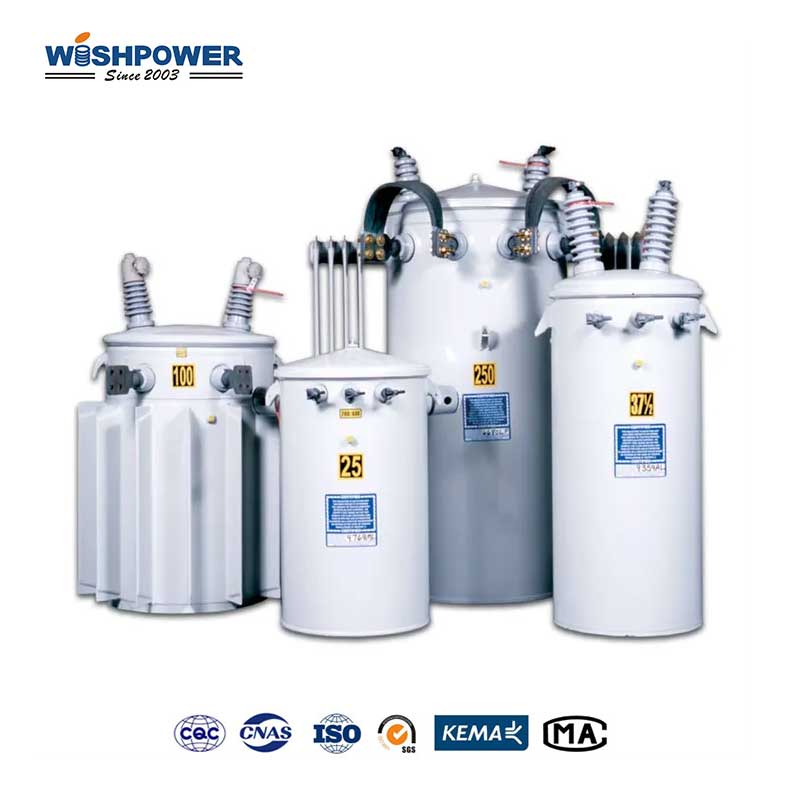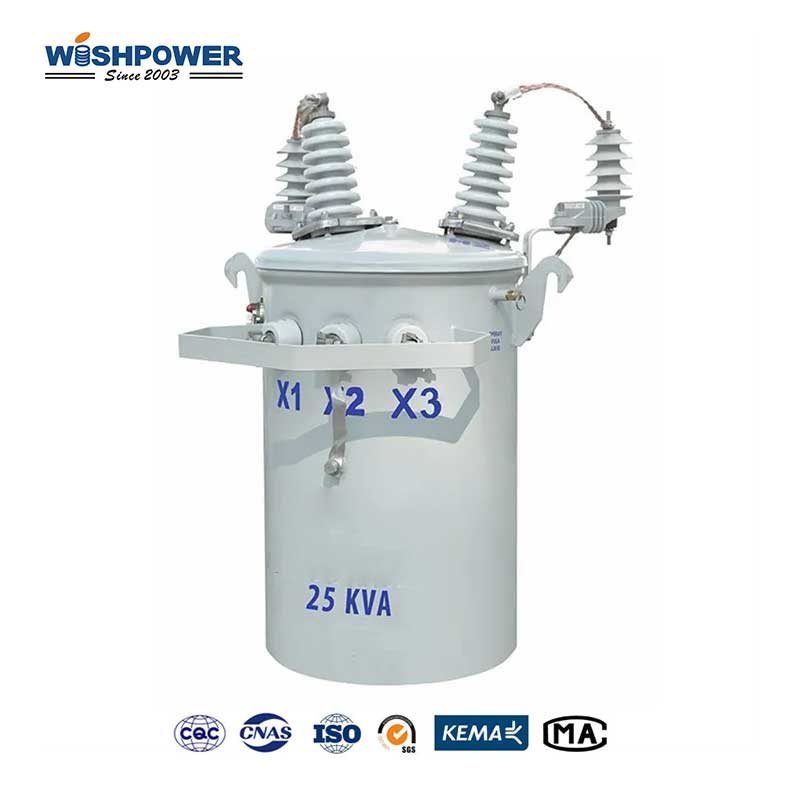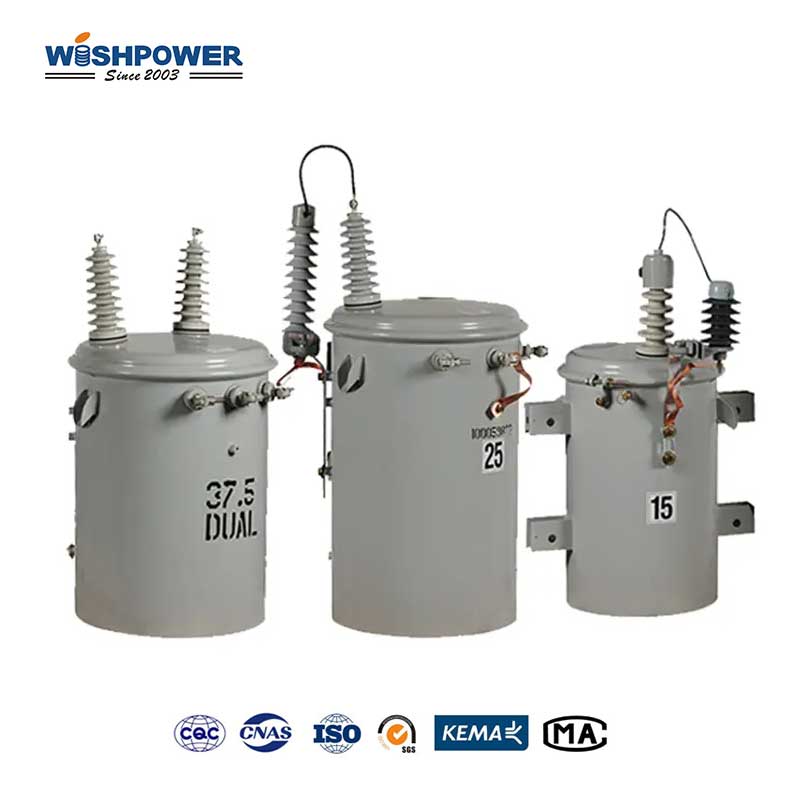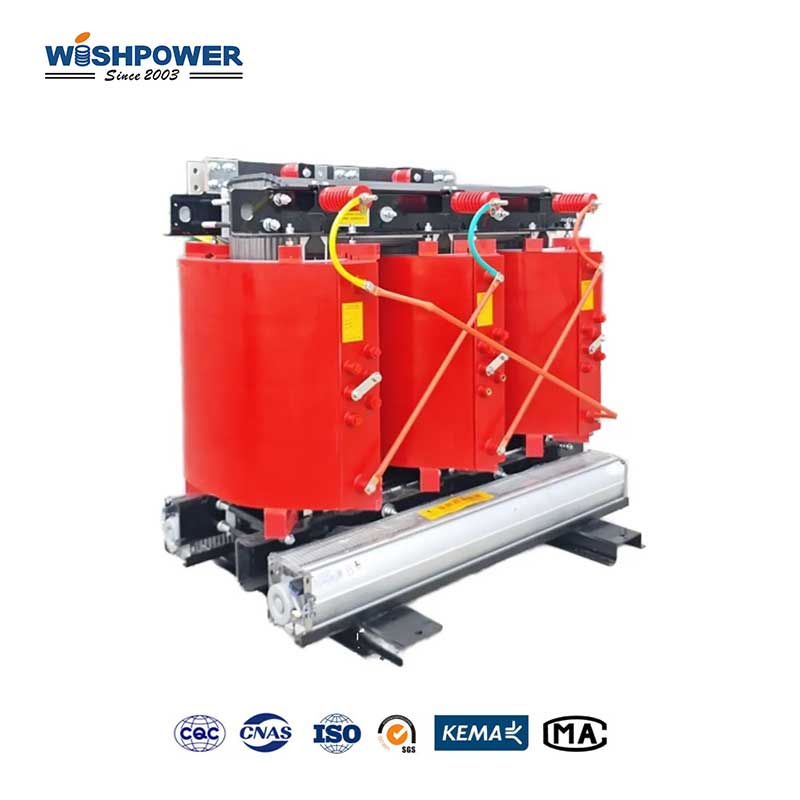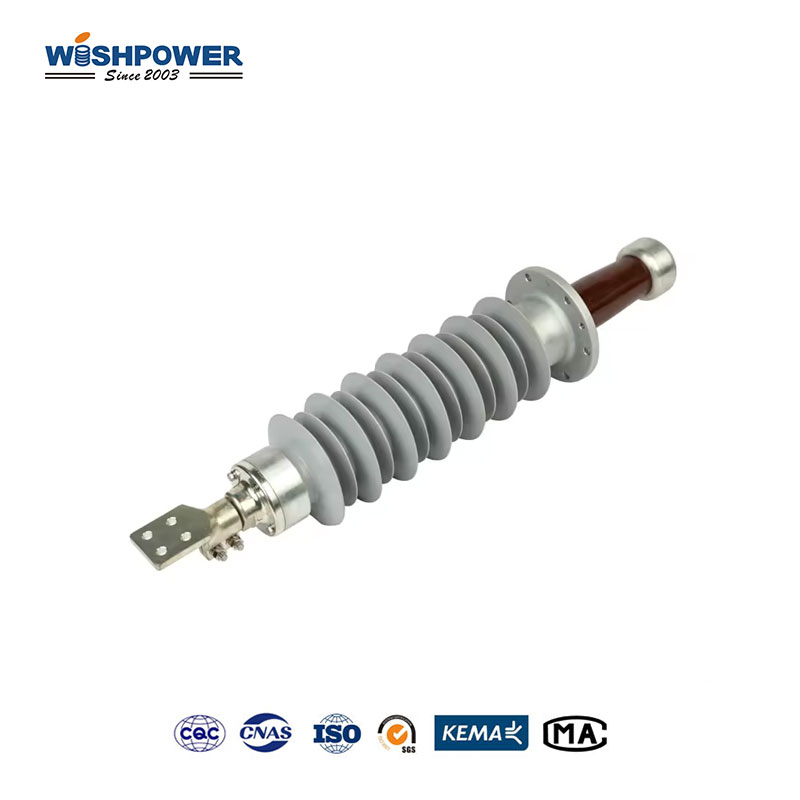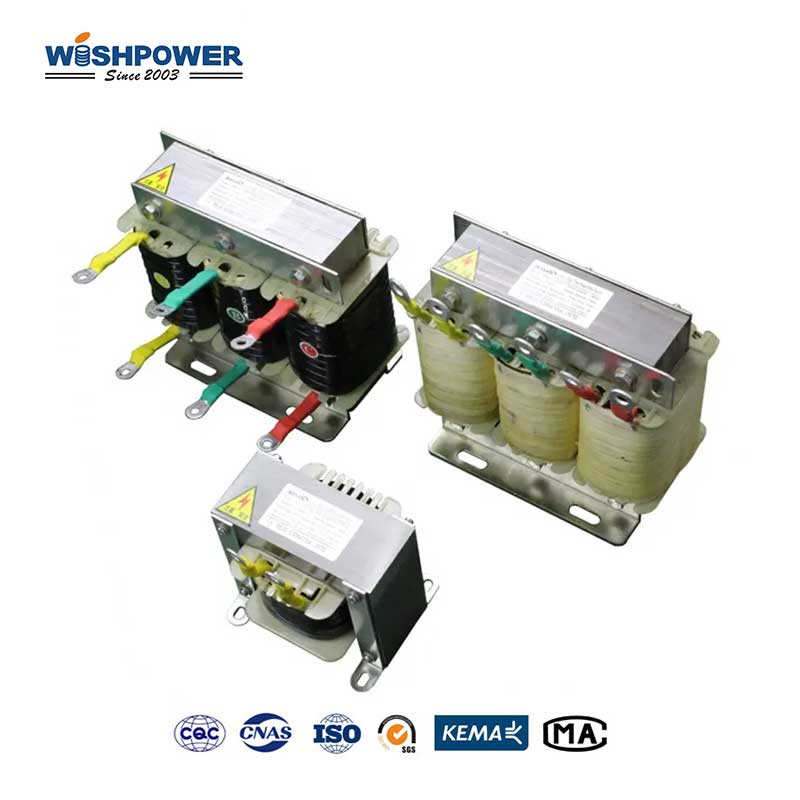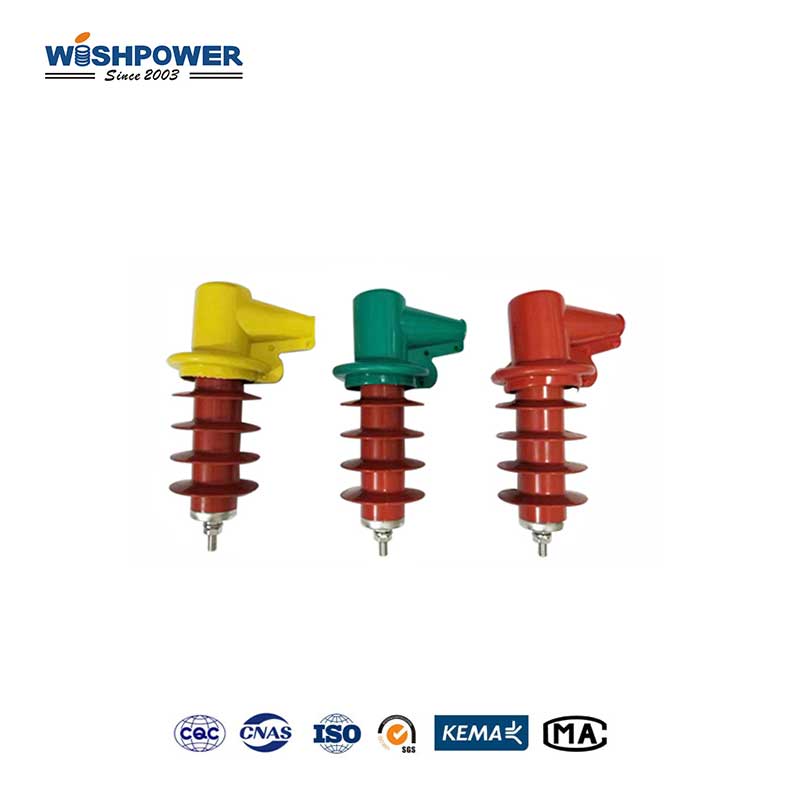Specification
| Rated power(KVA) |
5 |
10 |
15 |
20 |
25 |
30 |
50 |
63 |
80 |
100 |
125 |
160 |
| High Voltage |
11 10.5 10 6.3 6 |
| H.V. Tap range |
±5% ±2×2.5% |
| Low Voltage |
0.22 0.23 0.24 |
| Short-Circuit Impedance(%) |
4 |
| No-load loss(W) |
40 |
45 |
53 |
62 |
70 |
80 |
120 |
135 |
160 |
190 |
220 |
260 |
| Load loss(W) |
215 |
235 |
315 |
405 |
480 |
560 |
855 |
1020 |
1260 |
1485 |
1755 |
2050 |
| No load current(%) |
3.2 |
2.8 |
2.8 |
2.8 |
2.8 |
2.8 |
2.3 |
2.1 |
2 |
1.9 |
1.8 |
1.6 |
The table above is just one of our product parameters. If you want more information, please get in touch with info@wishpower.net
What is the Oil-Filled Power Transformer?
The Oil filled power transformer is an electrical transformer, whose insulating and cooling medium is oil. The oil serves as a protective aid to stopping the internal components from becoming drenched in dirt and moisture, along with expeditiously dumping warm that is made during the operation. These transformers most often are present in electrical power distribution systems, where they step up (or down) the voltage to transmit electricity. The transformer has to keep to the optimal operating temperatures, and the oil is circulated naturally or using forced circulation so that the transformer does not exceed this operating temperature. In a single-phase oil-immersed transformer (a specific oil transformer), this unit operates from a single-phase electrical supply. Rural areas, small industrial installations, and a variety of residential applications alike find themselves dependent on the use of single-phase power, and these transformers are very much in use. In addition to providing electrical insulation, the oil is also used to increase the transformers’ life and efficiency by decreasing the chances of overheating.

Oil Type Transformer VS Dry Type Transformer
Transformer Oil has been used as an insulating and cooling medium in the oil-cool transformer. Also, the oil helps insulate the electrical part of the transformer, and through the flow of the oil, the equipment does not overheat under high-loaded conditions. In addition, the use of oil ends up with the risk of oil leakage and fire. However, transformer oil can be contaminated or leak and may lead to a short circuit or fire, so special attention to fire prevention measures is needed when being used in a hazardous environment. The need for regular testing of the oil’s quality is it needs to ensure the oil’s insulation and cooling properties. It is maintained but has a long life and with proper maintenance, will work well longer. It has a low up-front cost and excellent energy performance that point to long-term operation. However such long-term costs might be high as maintenance is required to be done regularly and oil monitoring is necessary.
Dry-type transformers do not use oil, and their insulation and cooling are provided by air or solid insulating materials (for example, epoxy resin). Most commonly, cooling is dependent on air circulation (a forced air cooling system), or sometimes in combination with a typical cooling method. Since it uses no oil, there’s no chance of oil leakage and fire, and it’s more fitting for usage in places where safety is necessary (high-rise buildings, underground facilities). Is less maintenance as there is no maintenance requirement for oil. Because of its solid insulation material coupled with a simple air cooling system, the workload does not require daily maintenance; however, its low heat dissipation efficiency can shorten its life if excessively loaded. This is especially pointy for high-power devices, and the initial cost can be quite high. The maintenance cost is low, however, it is applicable for short-term and medium time load operation environments.
Benefits
- Efficient Cooling
High heat dissipation properties of oil result in excellent cooling capabilities of the oil-immersed transformer. They can handle higher loads, and provide consistent performance over a long time duration without overheating.
- Superior Insulation
The insulating oil is also electrically insulating, this providing strong electrical insulation protecting the transformer’s internal components from electrical faults, moisture, and contaminants. For safe transformer operation in harsh environments that may slow down current loading, this is done.
- Long Service Life
Their performance is because of their ability to protect against moisture and reduce heat, and they have a longer operational lifespan than dry-type transformers. They are a cost-effective option for long-term use because of this.
- High Power Capacity
Due to the ability of these materials to handle high voltage and power capacity, they are suitable for cater for high-power transmission and distribution systems. The retained thermal energy is far too significant and they are used widely in utility grids, power generation plants, and industrial settings.
- Cost-Effective
Higher voltage and power applications are often cheaper, especially for projects that need high reliability over the long term, when they provide a compromise between performance and cost.
Application
- Energy and Power Generation
They do important jobs in power generation power plants where they increase the voltage so power can be more efficiently transmitted long distances. Hydroelectric, thermal, nuclear, and renewable energy facilities use them to back up reliable voltage regulation and energy distribution.
- These are Utility and Transmission Networks.
They’re used widely in electrical utility grids to manage the high-voltage transmission and distribution of electricity over wide distances. Because of their durability and efficiency, they remain indispensable for a nation and a region’s power grids.
- Industrial Manufacturing
They are used to handle large electrical loads in industries such as steel, automotive, chemical, and mining. With heavy machinery, they watch to ensure there’s a stable power supply and no downtime, so continuous production.
- Railway and Transportation
They supply the power to run electric trains and signaling systems that the railway sector depends upon. These transformers are critical to electrified rail networks by providing how the very high voltages demanded for traction systems are managed.
- Oil and Gas
Oil-burning transformers are used in oil refineries and gas processing plants to power compressors, piping, and other important installations such as generators, etc. For this industry where power demand is so high, their ability to work under high load conditions makes them suitable for this industry.
Certificate

Factory

Hot Tags: Oil Filled Power Transformer, transformer, China, manufacturers, ISO factory, wholesale, KEMA, high quantity, best, price, low to high voltage






